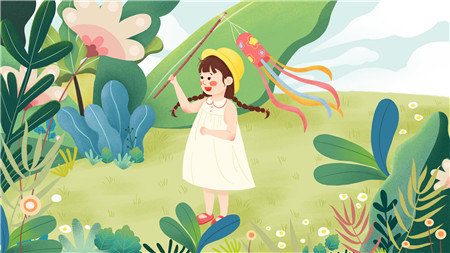Unit 4 Would you like some apples?
一、Topic课题:Unit 4 Would you like some apples?
二、 Teaching Aims教学目标:
知识目标(Knowledge):
1. To help students learn to use these phrases: a cup of… a glass of … a bag of …
2. Review and consolidate the vocabulary about food, drink and fruits.
3. Through studying the text to help the students to comprehend the story and try to retell.
能力目标(Ability ):
To further develop student’s ability to practice in pairs and work in groups.
情感目标(Feeling):
Stimulate student’s interest in learning English.
三、Key& Important items教学重、难点
Key words:
Love, grapes, tomato, popcorn, bowl, pasta, cheese. Sandwiches, burgers, stomach, maybe, sick, parents, worry, ice, soup, coca-cola, lemonade.
Communication sentences:
Would you like some apples?
Yes, I’d like to. No, thank you.
What does the man want to have?
Which room does the man choose?
What pets does the woman want?
四、Materials for Teaching教具准备
pictures
food(grapes, small tomatoes, popcorns)
word cards
cup, glasses, bottle, schoolbag, bowl, box
五、Pre-study Demands 预习要求
教师要求(Teachers):
1. Prepare the teaching materials carefully first and then guide the students to learn the text by themselves.
学生要求(Students):
1. Listen and read the text of unit 4 at least three times.
2. Look up the new words in the dictionary and make clear the pronunciations and meanings.
六、 教学过程Teaching Procedures
情景创设一:(学习句型:Would you like…?)
教学设计
教学反思
Step 1. Leading in. 激趣引入
教师在上课的时候可以有意识地拿一个苹果apple,边吃边问学生:Would you like some apples? 问的时候要让同学们感觉到老师很随意,没有上课的样子。问完一个学生之后,如果学生说Yes! 教师就削一小块苹果给该学生,然后再转向另一个学生。这样,老师就可以多问几个学生,直到把苹果分完为止。
Step 2. Practice. 练习交流
教师上课的时候带一些爆米花popcorn, 小西红柿tomatoes,随后拿出爆米花和小西红柿tomatoes问学生:would you like some popcorn/tomatoes?
Step 3. Presentation. 主题呈现
当学生在老师创设的情景中不知不觉的学到知识的时候,教师可以再向学生提问:How did I ask you the questions just now? Who can remember this? 学生能重复老师的话回答最好,如果不能,教师就可以把句型Would you like some apples?写在黑板上,然后问学生:Did I ask this questions? Did I say this sentence? Would you like some apples? How will you answer? You should say, “Yes, please.” or “No, thank you.” Do you understand? You can have a try.
这时,老师再用几个拓展的句子问学生:
Would you like to open the door for me?
Would you like to close the window for us?
Would you like to clean the blackboard for me?
Step 4. Pair works. 小组操练
教师作出一定的示范,马上让学生造一些句子,教师可以说:Now, who can make sentences with “Would you like to…?”如果学生造句很踊跃,教师可以让学生两人一组比赛造句,看谁造得多。教师可以这样引导:Very good. Now, let’s see who can make the most sentences. Now, practice in pairs.
Step 5. Report. 小组汇报
然后可以让学生小组合作练习2-3分钟,最后小组汇报,看哪个小组造的句子又多又好。
情景创设二: (学习量词的表达法:a cup of… a glass of … a bag of …)
教学设计
教学反思
Step 1. Leading in. 激趣引入
教师拿出一个茶杯对同学们说:Oh, I am thirsty. I want to drink some tea. Look, this is a cup. But there is no tea inside. Who has a cup of tea? Have you got a cup of tea? 教师在陈述的时候要尽量放慢节奏,以便学生能听懂并跟上老师说话的语速。
Step 2. Presentation. 主题呈现
然后教师再拿着玻璃杯解释说:This is a glass. This is milk. If you put some milk in this glass(将一袋牛奶倒入玻璃杯中),it is called, “a glass of milk”. Do you understand? Now, look and listen. What’s this? 教师举着装牛奶的杯子,同时问一些问题:
Do you like to drink milk?
Does anyone also like to drink milk?
Who else like to drink to milk?
How many glasses of milk do you drink every day?
Who buys the milk in your family?
Step3. Practice. 练习拓展
教师将提前准备好的几种不同东西放在讲桌上(或用电脑课件呈现),以便说明:a cup of tea/ a glass of water/ a bottle of juice/ a bag of juice/ a bowl of rice/ a box of chocolate等等。
Step 4. Reading individually自主学习
教师每说一个短语的时候,要启发学生一起说,说完一遍之后,让学生自己练习表达,锻炼学生的口语表达能力和自主学习的能力。
Step 5. Pair works & report. 小组练习及汇报
学生小组合作操练,最后分小组表达汇报,或小组比赛。
Step 6. Ask and answer questions. 实践运用
教师拿着一个物品或图片问学生:(或用电脑课件呈现)
Would you like a cup of tea?
Would you like a glass of water?
Would you like a bowl of rice?
Would you like a cup of coffee?
Would you like a bottle of juice?
Would you like a box of chocolate?
Would you like a bag of apples?
同时引导学生会带“Yes, please.” “No, thank you.”, 然后让
学生看着P20第3 部分,小组合作进行问答练习后汇报表演。
合作探究一:
教学设计
教学反思
学生自主学习第四部分阅读。
学生自由读短文----自主学习查字典弄懂新单词的意思----小组合作讨论(提问,答疑)----组际交流答疑释惑。
教师提出问题让各组讨论:
Do you often have sports?
Do you feel thirsty after the sports?
What do you like to do?
Do you often drink cold water?
合作探究二:学唱第六部分歌曲
教学设计
教学反思
Step 1. 教师先让学生听一遍歌曲,然后让学生跟着录音一起唱。
Step 2. 让学生唱得比较熟悉的时候,让学生小组合作,自己填词。Now, I want you to work in groups. You can change some of the song’s words. Later, we’ll find some group to sing your own songs.
合作探究三:自主学习第7部分故事
教学设计
教学反思
Step 1. Listen and repeat the story.
Step 2. Students read individually.
Step 3. Students look up the new words in the dictionary and make clear the sounds and meanings by themselves.
Step 4. Reading practice.
1. Students read together.
2. Students read in groups.
3. Reading competition. (students read group after group)
Step 5. Work in groups to practice ask questions like the 3 questions on page 22.
Who teaches English in America?
What does Miss Jane do in America?
Whrer does Miss Jane teach English?
Step 6. Retell the story.
Students practice retell the story.
Miss Jane ---English ---America---students---smart---one day---english class---said to the students---everybody---Miss Jane---walking slowly---listening to---suddenly---own shoes were different---quickly---behind---ten minutes later---went out of the classroom---the next day---everybody---she went to check---great surprise--- wearing a pair of mismatched shoes.
自主体验一:
教学设计
教学反思
玩 “Bingo” 的游戏。
学生小组内合作学习,把这些单词milk, tea, coffee, water, soup, apple juice, coca-cola, lemonade, orange juice, tomato juice, pineapple juice, 7-up填入表格中,学生小组内玩“Bingo” 的游戏。
自主体验二:Let’s share the popcorns.
教学设计
教学反思
上课时,教师让一个学生拿着一袋爆米花在教室里问另一个学生,Would you like to have some popcorn? 如果学生说;Yes, l’d love to. 问话的同学就可以把爆米花递给他,然后自己回到座位上。如果被问的学生说不要,问话的学生就可以拿着爆米花继续去问其他同学。这样可以让同学们有机会练习本单元学习的重要句型Would you like…。
教师可以这样引导学生:look, everyone. I’ve got a big bag of popcorns. You know popcorns. Who want to have some popcorn? You come here please. Would you like some popcorn? OK, here you are. 当学生把爆米花递给另一个学生的时候说:you can go on asking other friends the same question. Would you like some popcorns? Do you understand? Now, let’s begin.
自主体验三:Pass and ask.
教学设计
教学反思
教师提前准备好不同的东西,可以是水果、食物、纸做的小图片等,把这些东西放在讲桌上。每个组选一名同学上台,拿着讲桌上的东西递给组内的其他东西,边递边问:Would you like some…? (拿的什么就问什么)不管下一个学生说的是“Yes”还是“No”,都要接过东西问用同样的句子问下一个学生。 教师可以这样引导:
Look, we have many things on this big table. The first student of each group comes to the front and takes something here and then goes back. He/she can ask the students in his/her group,” Would you like some..? ”The second student can answer: “ Yes, please” or “No, thank you.” If you say “ Yes” you can take one. If you say “No” . you don’t take any. After this, you need to take the things and ask the next student the same question and then go on one by one.
自主体验四:Quick response.
教学设计
教学反思
Step 1. 教师示范: 拿出一个茶杯的图片或食物,引导学生快速作出反应:a cup of tea.
Step 2. 小组竞赛抢答。
Step 3. 小组操练,组内练习。
Rice(a bag of), water(a glass of water), books(a bag of; a box of), soup(a bowl of), juice(a bottle of ), bottles(a box of).
自主体验五:Spelling competition.
教学设计
教学反思
Now, let’s have a spelling competion. First I’ll give you two minutes to memorize the words on Exercise 3. Do it quickly.
Now, let’s have a word competition. Each time I let one student of each group stand up. When I say a word “finish”, the student who is standing should quickly run to the blackboard and write the word. Let’s see which group is the first.




